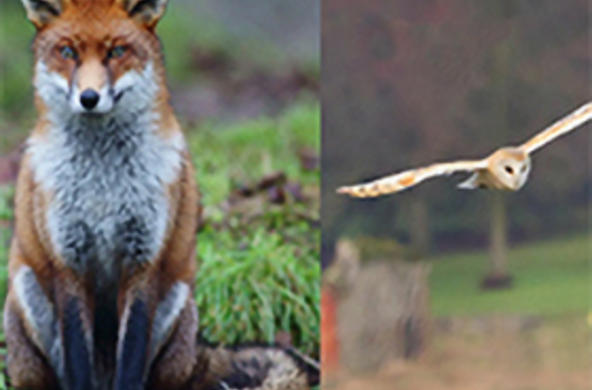We've had a wet stretch of weather. First we were drenched by Irene, then again with Lee. Saturated soils had additional rainy days. And as a result, mosquitoes have been out in droves. Heading outdoors is a vivid reminder of our place in the food web. Stay still for a few seconds, and you will quickly find that we are not on top.
Mosquitoes need water to breed. Some species lay their eggs directly into standing water. Other species, including some of the more voracious human-biters, lay their eggs on dry surfaces near water sources. These species use a 'bet-hedging' strategy; by spreading their eggs across several surfaces, they increase the chances that one of the surfaces will become covered in water.
Many of the mosquitoes flying about in recent weeks likely hatched from eggs laid on soil, tree bark and other low-lying surfaces. Unfortunately, rather than only a small portion of these eggs getting submersed, it seems that most of them were. Because ephemeral pools and flooding persisted, mosquitoes restricted to laying eggs directly into water also benefitted from end of summer rains. These are the same species we'd normally see in the area, just more of them.
Unfortunately, this is the worst time of year to experience a surge in blood suckers. Zoonotic diseases — maladies carried by animals and transferred to humans and other animals — peak in late summer. Because these diseases have had the time to build up in wildlife, the probability that a mosquito could contract and pass infection to humans (or horses) shoots up as well.
West Nile virus and eastern equine encephalitis have both been reported in New York state in the past month. Both of these viruses are carried by wild bird populations, predominantly through mosquito transmission. Both can be passed to humans, sometimes with devastating consequences.
Human risk is a function of numbers and timing. First, the pathogen must build up in wild animal populations. Then, infected animals must transmit the pathogen to a mosquito species that feeds on multiple animals, including humans. The more mosquitoes there are, the greater the probability the pathogen will increase in wild animals. When mosquitoes are abundant late in the season, there is a the greater the probability that one will bite an infected animal and then a human.
This summer, heat and precipitation led to perfect mosquito conditions. And each of these tiny pests is now following the cues of declining daylight to feed and lay eggs to prepare for winter, and next year's brood. As many birds and other small mammals have begun to migrate or shift range patterns for the winter, we are the primary fodder for the current mosquito surge.
Public health sites recommend everyone remove all sources of standing water from yards. This year, many of us here in New York and the broader Northeast will find this difficult. Irene, Lee and the previously wet month have collectively altered local hydrology.
Removing flooded debris from yards is critical, as many container habitats hold warm, nutrient-rich water that speeds mosquito development. However, mosquitoes can and will fly up to several kilometers (although most stay much closer to hatch sites) to find blood meals and better habitat. And in this cooler weather, many of today's little beasts will be with us for weeks to come.
And many more will hatch until the ground is dry or a sustained frost cuts them off.
So, repair your screens, wear long pants, use repellent, and don't feed the mosquitoes!







